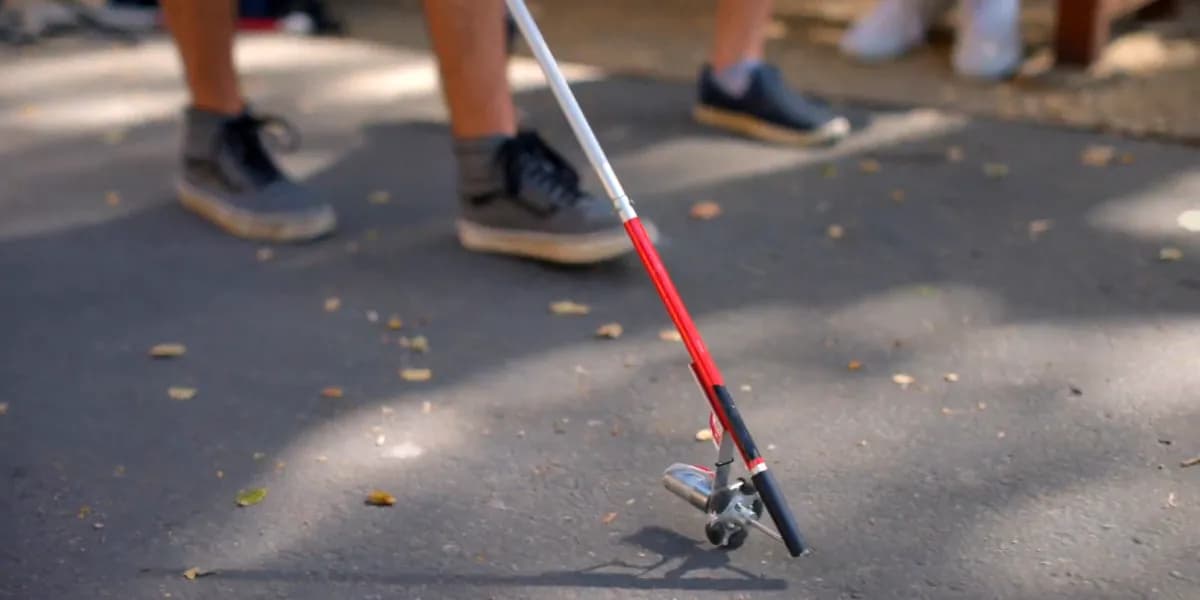Progress for 0 ad
Progress for 1 ad
Progress for 2 ad
Progress for 3 ad


Blen Hailu
Addis Ababa, Ethiopia

In Ethiopia, where an estimated 1.6 million people live with blindness and nearly 3.3 million experience some form of visual impairment, accessibility remains an afterthought in urban planning.
Most public buildings lack tactile paving, ramps, or auditory traffic signals. Even Addis Ababa, home to Africa’s diplomatic capital, offers little in the way of inclusive infrastructure. Assistive technologies are scarce and often imported at prohibitive costs.
Against this backdrop, a young Ethiopian innovator is reimagining mobility for the blind. Dubbed Bright Cane, this locally developed, assistive walking device merges ultrasonic sensors with Amharic voice feedback to alert users of obstacles and guide them safely through uneven roads and crowded streets.
Nigus Amare, the person behind it, says Bright Cane is designed to be affordable and adaptable to the local environment, where uneven roads and limited accessibility remain daily challenges.
An alumnus of Debre Markos University Negus recalls that the idea for Bright Cane emerged during his final year research for his information technology undergraduate degree. “I wanted my research to contribute to the community,” he told Shega.
What began as an academic project quickly evolved into a functional prototype, gaining recognition in a short time. In 2022, while still a final-year student, Nigus collaborated with Tariku Wale, an IT major, and Zelalem Endalew, an electrical engineering student, to build the device. Bright Cane was subsequently named one of the top 20 winners at the Bruh-ICT 2022 National Competition, earning 200,000 Birr.
According to Nigus, the device’s voice guidance system is what sets Bright Cane apart. It communicates in Amharic as well as other local and international languages, alerting users to obstacles and potential hazards. The system is also customizable for language preference and level of assistance, ensuring accessibility across Ethiopia’s diverse communities.
Early tests with three visually impaired users, one university student, and two government employees found the cane intuitive and effective in improving daily mobility.
However, developing the cane came with several challenges. In its early stages, while Nigus was still a university student, finding suitable materials and technical components was difficult. The team often had to work with limited resources and local substitutions.
According to him, comparable devices in Europe retail for $500–$800. “What we currently have is a prototype,” he explains, “and the estimated cost of developing it is around 19,000 Birr.” However, he believes that once mass production begins, the production cost will drop significantly, allowing the team to offer the device at a far more affordable price.
Currently, they are awaiting patent approval from the Ethiopian Intellectual Property Office, a process that can take several months. This formal approval is crucial, as it grants them exclusive rights to their design and protection against replication in Ethiopia.
Meanwhile, the team has established a workshop within the Ethio-China Technical Institute near Lambert. Operating under the institute’s umbrella, they benefit from its facilities and guidance. In return, the institute is entitled to a share of profits once production and distribution begin. Specific percentages have not yet been finalized, and the negotiations will occur once the product reaches the market.
However, Negus envisions a more ambitious path: establishing their own facility and workshop. Establishing an independent workshop would require around $75,000 (≈11,250,000 Birr ), to start mass production and provide working capital for the startup.
The team plans to begin production within the next year, with hopes of expanding across Ethiopia and eventually the wider East African region.
👏
😂
❤️
😲
😠

Blen Hailu
Blen Hailu is a member of Shega's Young Professionals Program and an intern at Shega Media. She has a marketing management degree and prior experience in digital media.
Your Email Address Will Not Be Published. Required Fields Are Marked *